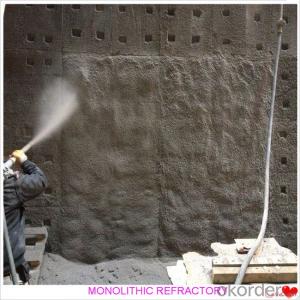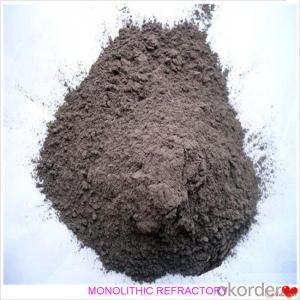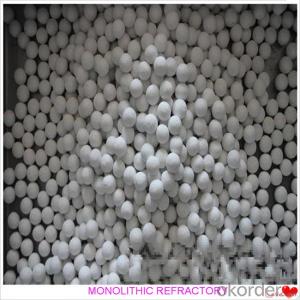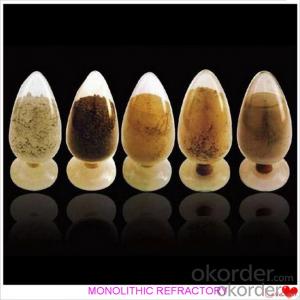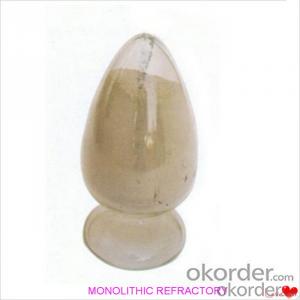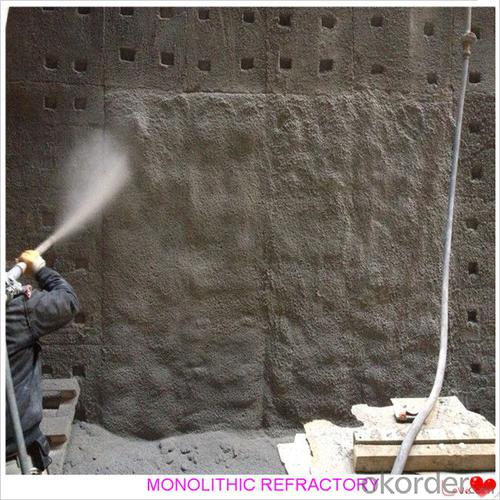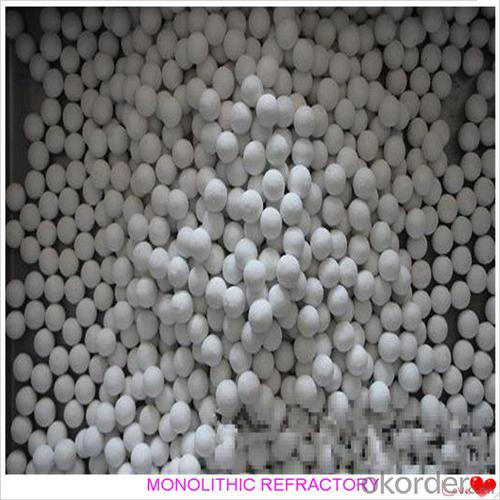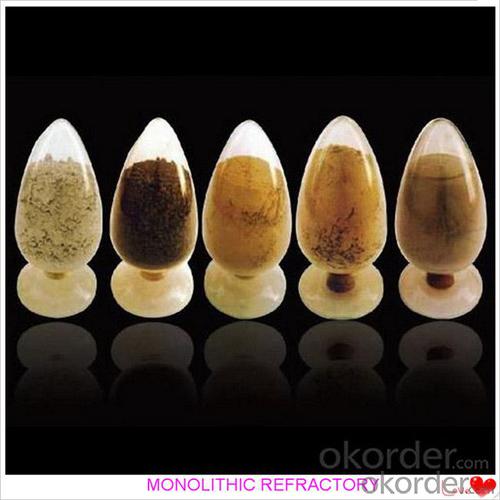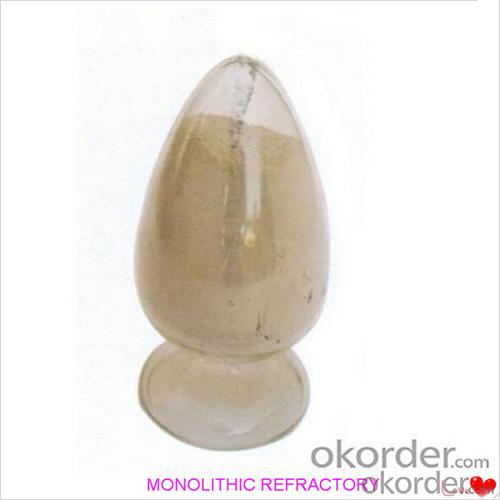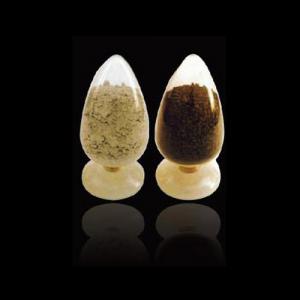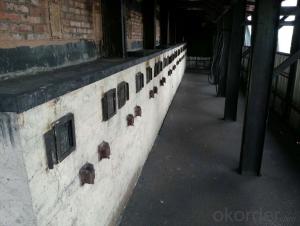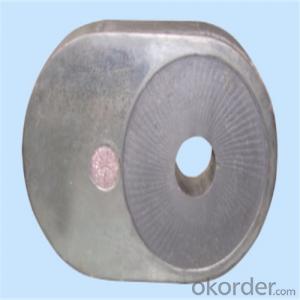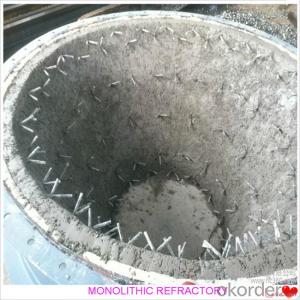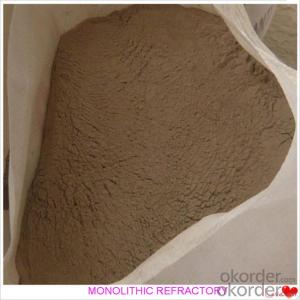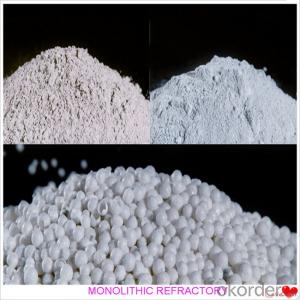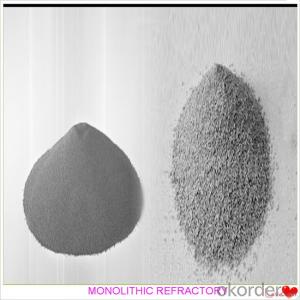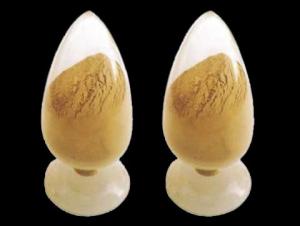Monolithic Refractories for Iron and Steel Industry - Portland Cement Castable for Fireplace and Industrial Furnace
- Loading Port:
- China main port
- Payment Terms:
- TT or LC
- Min Order Qty:
- 1000 kg
- Supply Capability:
- 3000000 kg/month
OKorder Service Pledge
OKorder Financial Service
You Might Also Like
Portland Cement Castable for Fireplaces and Industrial Furnaces
Product Description:
Portland cement castable is manufactured according to international standards. The product is famous for its excellent abrasion resistance and low thermal conductivity. Further, these can be provided in different specifications as required by clients. Castables use high purity raw materials and additives as the main material, and are made with superfine powder adding technology.
Product Features:
The material has excellent structural stability and air tightness, and has high physical and chemical properties, and also excellent working ability. If should be used with the same material products.
Product Applications:
Widely used in various kiln linings, such as boilers, blast furnace hot blast stoves, heating furnaces, ceramic kilns, heat treatment furnaces, incinerators, re-circulating fluidized bed furnaces and chemical industry and construction industry furnaces.
Product Specifications:
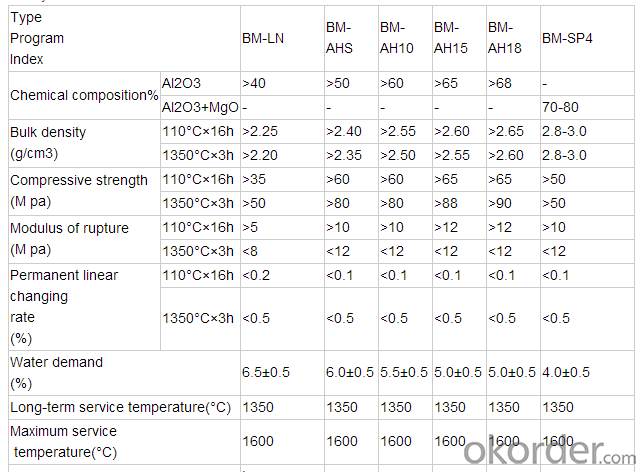
Product Images:
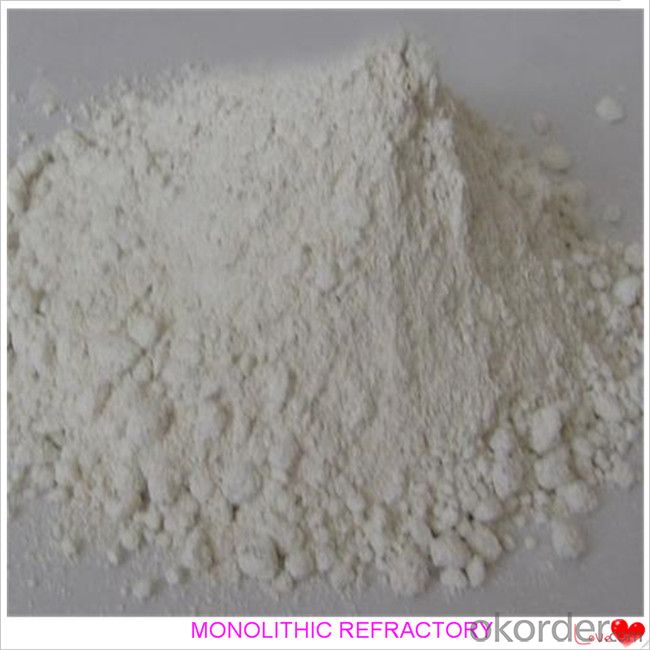
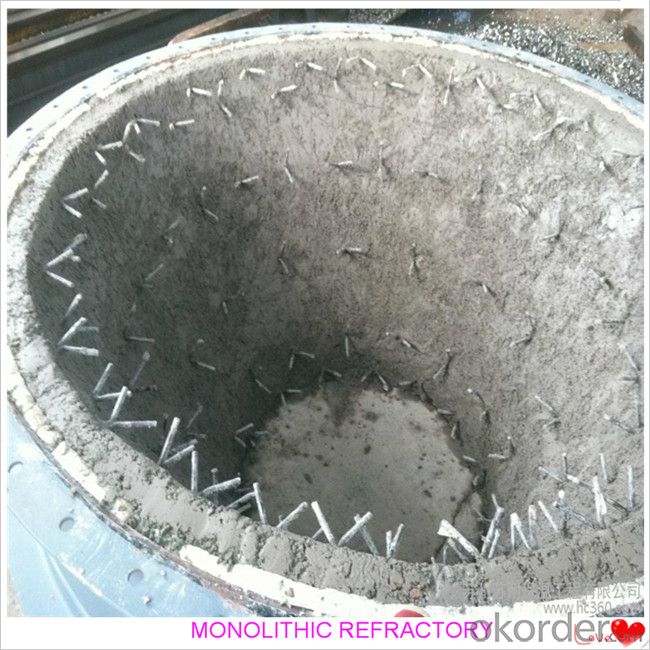
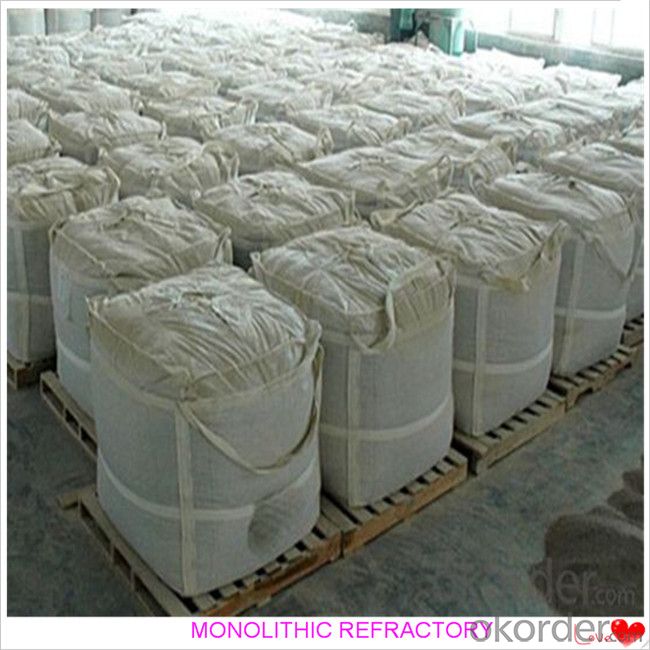
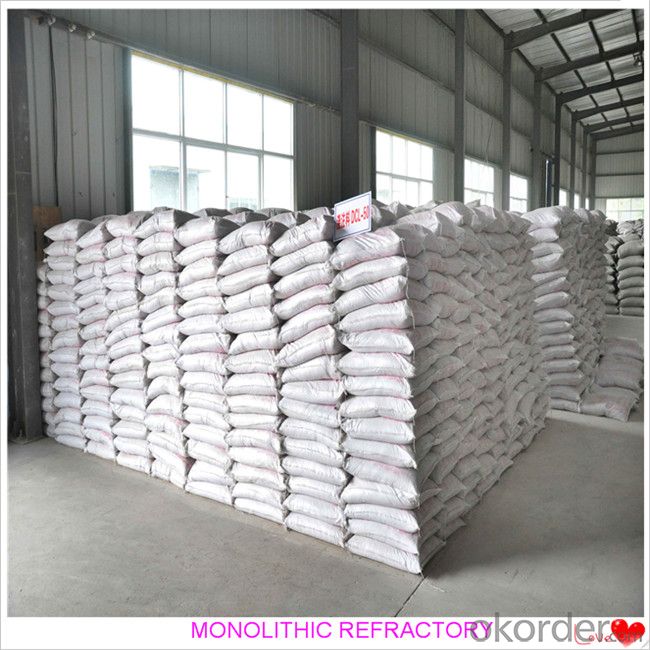
FAQ:
Q1: Why buy Materials & Equipment from OKorder.com?
A1: All products offered by OKorder.com are carefully selected from China's most reliable manufacturing enterprises. Through its ISO certifications, OKorder.com adheres to the highest standards and a commitment to supply chain safety and customer satisfaction.
Q2: How do we guarantee the quality of our products?
A2: We have established an advanced quality management system which conducts strict quality tests at every step, from raw materials to the final product. At the same time, we provide extensive follow-up service assurances as required.
- Q: How do monolithic refractories withstand high temperatures and thermal cycling?
- Monolithic refractories withstand high temperatures and thermal cycling due to their unique composition and structure. They are made from a single piece or material, which eliminates joints or seams that could be vulnerable to thermal stress. Additionally, they are designed with a high thermal conductivity and low thermal expansion, allowing them to expand and contract without cracking or spalling. This enables them to maintain their integrity and mechanical strength even under extreme temperature fluctuations, making them highly durable and suitable for applications in industries such as steel, cement, and petrochemical.
- Q: How do monolithic refractories contribute to energy efficiency in iron and steel production?
- Monolithic refractories play a crucial role in enhancing energy efficiency in iron and steel production processes. These refractories are unshaped materials that are used to line the various components of furnaces, kilns, and other high-temperature equipment involved in the production of iron and steel. One way monolithic refractories contribute to energy efficiency is by providing excellent insulation. These materials have low thermal conductivity, which means they effectively reduce heat transfer from the furnace or kiln to the surrounding environment. By minimizing heat loss, monolithic refractories help maintain high temperatures within the production units, which in turn reduces the energy required to sustain the desired operating conditions. Furthermore, monolithic refractories offer superior resistance to thermal shock and wear, ensuring the longevity of the lining materials. This durability reduces the need for frequent repairs and replacements, leading to less downtime and increased operational efficiency. As a result, energy is conserved since the production units can continuously operate at optimal temperatures without interruptions. In addition, monolithic refractories have excellent resistance to chemical reactions, corrosion, and erosion caused by molten metals and slag. This resistance reduces the formation of cracks and defects in the lining, which can compromise the insulation and increase heat loss. By maintaining a robust and intact lining, monolithic refractories contribute to energy efficiency by minimizing heat escape and ensuring the efficient utilization of energy for the iron and steel production processes. Moreover, the use of monolithic refractories allows for design flexibility in the construction of furnaces and kilns. Their ability to be shaped and applied in various configurations enables the creation of optimized lining structures that enhance heat transfer and combustion efficiency. This flexibility empowers engineers and operators to design and modify the production units to maximize energy efficiency and minimize energy wastage. Overall, monolithic refractories contribute significantly to energy efficiency in iron and steel production by providing excellent insulation, durability, resistance to thermal and chemical degradation, and design flexibility. By reducing heat loss, minimizing repairs and replacements, and optimizing heat transfer, these refractories play a vital role in conserving energy and improving the overall sustainability of the iron and steel industry.
- Q: How do monolithic refractories impact the quality and performance of iron and steel products?
- Monolithic refractories play a crucial role in ensuring the quality and performance of iron and steel products. These refractories are specifically designed to withstand extremely high temperatures and harsh conditions, making them an essential component in various applications within the iron and steel industry. Firstly, monolithic refractories contribute to the overall quality of iron and steel products by providing excellent thermal insulation. They help to maintain a consistent and controlled temperature environment in the manufacturing process. This is particularly important in blast furnaces, where temperatures can reach up to 2,000 degrees Celsius. By effectively insulating the furnace walls, monolithic refractories help to minimize heat loss and ensure efficient energy utilization. This ultimately leads to higher-quality products with improved mechanical properties. Secondly, monolithic refractories offer superior resistance to chemical and physical wear. In the steelmaking process, molten metal and slag can be highly corrosive, causing erosion and degradation of the refractory lining. Monolithic refractories are specifically engineered to withstand these aggressive environments, providing excellent resistance to chemical attack and mechanical stress. By maintaining the integrity of the lining, they prevent contamination and prolong the lifespan of the furnace or ladle, ultimately enhancing the quality of the final iron and steel products. Furthermore, monolithic refractories enable greater design flexibility and ease of installation. Unlike traditional refractory bricks, which require meticulous placement and fitting, monolithic refractories can be applied as a single, cohesive material. This allows for more complex shapes and structures, resulting in optimized furnace design and improved thermal efficiency. Additionally, the ease of installation reduces downtime during maintenance and repairs, ensuring continuous production and minimizing disruptions to the production process. Overall, monolithic refractories significantly impact the quality and performance of iron and steel products. They provide excellent thermal insulation, resist chemical and physical wear, and offer greater design flexibility. By ensuring consistent and controlled temperature environments, preventing contamination, and enabling efficient production processes, monolithic refractories contribute to the production of high-quality iron and steel products that meet the stringent requirements of various industries.
- Q: How do monolithic refractories resist corrosion from molten metals?
- Monolithic refractories resist corrosion from molten metals due to their inherent chemical composition and physical properties. These refractories are made using high-quality materials that possess excellent resistance to chemical attack and high temperatures. They are designed to have a dense and compact structure, which helps in preventing the penetration of molten metals and minimizing the reaction between the refractory and the metal. Additionally, monolithic refractories often contain additives or binders that enhance their resistance to corrosion, making them highly effective in withstanding the aggressive nature of molten metals.
- Q: What are the key properties of shotcrete mixes used for monolithic refractory applications?
- The key characteristics of shotcrete mixes utilized in monolithic refractory applications are as follows: 1. Strong: Shotcrete mixes for monolithic refractory applications must possess a high level of compressive strength in order to withstand the intense temperatures and stresses endured in refractory environments. This ensures that the shotcrete lining remains intact and provides effective insulation and protection. 2. Minimal Porosity: Shotcrete mixes should exhibit low porosity to minimize the infiltration of gases and liquids into the refractory lining. This is crucial in preventing corrosion and degradation of the lining, ensuring its long-lasting durability. 3. Thermal Stability: Shotcrete mixes must demonstrate exceptional thermal stability to endure the extreme heat conditions encountered in refractory applications. They should also possess low thermal conductivity to effectively insulate the structure and prevent heat transfer, thus preserving the integrity of the refractory lining and optimizing its performance. 4. Resistant to Wear and Tear: Shotcrete mixes used in monolithic refractory applications should have high resistance to abrasion, enabling them to withstand the mechanical wear caused by the movement of materials and particles. This property ensures that the refractory lining remains intact and provides effective protection against erosion. 5. Resistant to Chemicals: Shotcrete mixes should be resistant to chemical attacks from molten metals, slag, and other corrosive substances commonly found in refractory applications. This resistance helps to maintain the integrity of the lining and extend its service life. 6. Easy to Work with: Shotcrete mixes should exhibit good workability to facilitate easy placement and application. This allows for efficient and precise installation of the refractory lining, ensuring the desired thickness and coverage. In summary, shotcrete mixes utilized in monolithic refractory applications must possess a combination of high strength, low porosity, thermal stability, abrasion resistance, chemical resistance, and workability in order to guarantee optimal performance and durability in refractory environments.
- Q: What are the factors affecting the thermal expansion of monolithic refractories?
- The factors affecting the thermal expansion of monolithic refractories are the composition of the refractory material, the temperature gradient, and the firing or curing process.
- Q: What are the typical compositions of monolithic refractories?
- Typically, monolithic refractories consist of a combination of aggregates, binders, and additives. Aggregates, such as alumina, magnesia, or silicon carbide, provide the main refractory properties and are chosen based on the desired characteristics of the refractory, such as resistance to high temperatures, thermal shock, or chemical attack. To bind the aggregates together and give the refractory its shape and strength, binders are used. Common binders include clay, calcium aluminate cement, or colloidal silica. The binder also impacts the overall performance of the refractory, affecting properties like thermal conductivity and chemical resistance. Additives are often included in the composition of monolithic refractories to improve specific properties or facilitate the processing. These additives can be plasticizers, which enhance workability and make installation easier, or antioxidants, which enhance the refractory's resistance to oxidation. Ultimately, the specific composition of a monolithic refractory can vary depending on the intended application and desired performance characteristics. Different combinations of aggregates, binders, and additives can be customized to meet specific temperature ranges, chemical environments, or mechanical stresses.
- Q: How do monolithic refractories resist corrosion and erosion in iron and steel applications?
- Monolithic refractories resist corrosion and erosion in iron and steel applications through several mechanisms. Firstly, their high-density composition and low porosity make them less susceptible to chemical attack and penetration by corrosive agents. Secondly, their high thermal conductivity ensures efficient heat transfer, minimizing the formation of localized hotspots that can accelerate corrosion. Additionally, monolithic refractories are often designed with specific additives and bonding agents that enhance their resistance to chemical reactions and erosion caused by molten metals and slag. Overall, their robust structure and tailored formulation make monolithic refractories highly effective in withstanding the harsh conditions of iron and steel applications.
- Q: Can monolithic refractories be customized for specific iron and steel processing requirements?
- Yes, monolithic refractories can be customized for specific iron and steel processing requirements. Monolithic refractories are known for their versatility and ability to be tailored to various applications. The composition, physical properties, and installation techniques of monolithic refractories can be adjusted to meet the specific needs of iron and steel processing. For example, the choice of raw materials used in the manufacturing of monolithic refractories can be customized to withstand the high temperatures and harsh chemical environments encountered in iron and steel processing. Different types of aggregates, binders, and additives can be selected to enhance the refractory's resistance to thermal shock, erosion, and corrosion. Furthermore, the installation method of monolithic refractories can be adapted to suit the specific requirements of iron and steel processing. Whether it is gunning, casting, ramming, or spraying, the installation technique can be customized to ensure optimal performance and longevity in the given application. Additionally, monolithic refractories can also be tailored to specific shapes and sizes to fit the various equipment and structures used in iron and steel processing. This allows for a more precise and efficient lining of furnaces, ladles, tundishes, and other vessels, thereby improving the overall productivity and performance of the process. In summary, monolithic refractories can be customized to meet the specific iron and steel processing requirements by adjusting their composition, physical properties, installation techniques, and shape. This customization ensures that the refractories can withstand the extreme conditions encountered in these industries, leading to improved performance, longer service life, and enhanced productivity.
- Q: How do monolithic refractories improve the efficiency of ladle and tundish lining systems?
- Monolithic refractories play a crucial role in improving the efficiency of ladle and tundish lining systems in several ways. Firstly, monolithic refractories are made from a single piece of material, which eliminates the need for joints or seams. This seamless construction ensures that there are no weak points in the lining system, reducing the risk of leakage or infiltration of molten metal. Additionally, monolithic refractories offer excellent thermal insulation properties. They have low thermal conductivity, meaning they can withstand high temperatures without transferring heat to the surrounding environment. This insulation capability minimizes heat loss from the ladle or tundish, allowing for better heat retention and energy efficiency. It also helps maintain the desired temperature of the molten metal, preventing premature solidification and maintaining the desired fluidity for casting. Furthermore, monolithic refractories offer superior resistance to chemical attacks from molten metal and slag. They have excellent corrosion resistance properties, ensuring that the lining remains intact and durable even when exposed to aggressive chemical reactions. This resistance to corrosion extends the lifespan of the lining system, reducing the frequency of maintenance and replacement, thereby improving overall efficiency and reducing downtime. Another advantage of monolithic refractories is their ease of installation. Unlike traditional brick or block linings, monolithic refractories can be applied as a single, uniform layer, making the installation process simpler and quicker. This reduces the time required for lining repairs or replacements, minimizing production interruptions and improving the overall operational efficiency of ladles and tundishes. In summary, monolithic refractories improve the efficiency of ladle and tundish lining systems by providing seamless construction, excellent thermal insulation, superior corrosion resistance, and easy installation. These characteristics ensure better heat retention, reduced heat loss, increased durability, and minimized downtime, resulting in improved productivity and cost-effectiveness for metal casting processes.
Send your message to us
Monolithic Refractories for Iron and Steel Industry - Portland Cement Castable for Fireplace and Industrial Furnace
- Loading Port:
- China main port
- Payment Terms:
- TT or LC
- Min Order Qty:
- 1000 kg
- Supply Capability:
- 3000000 kg/month
OKorder Service Pledge
OKorder Financial Service
Similar products
Hot products
Hot Searches
Related keywords
